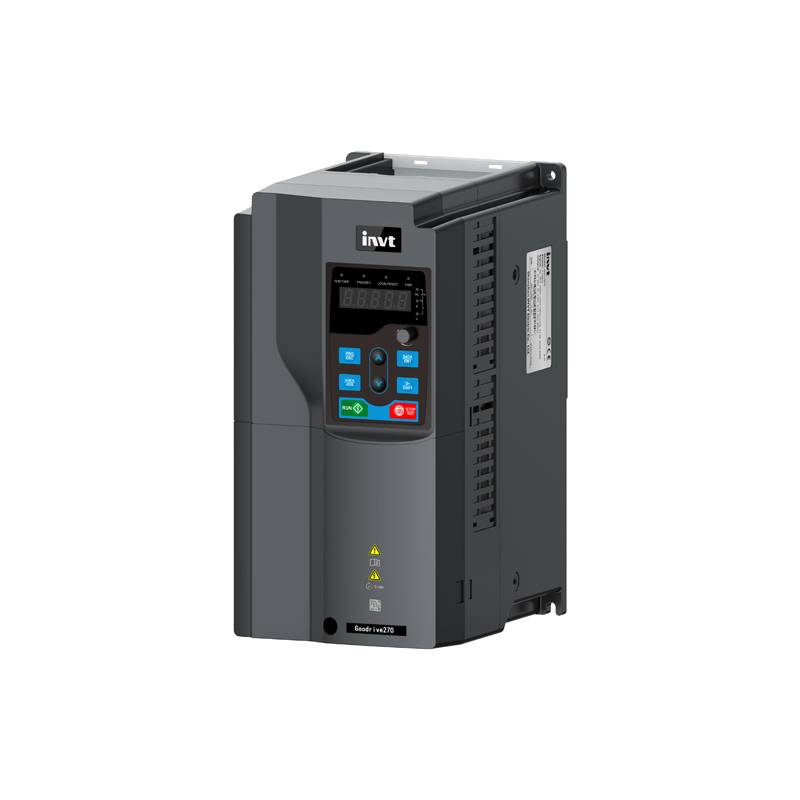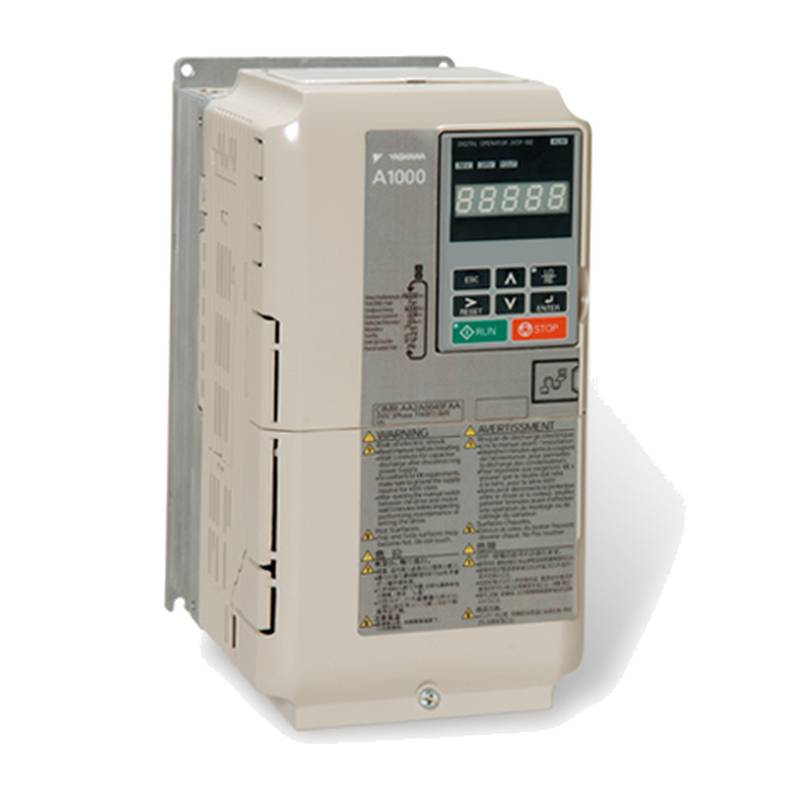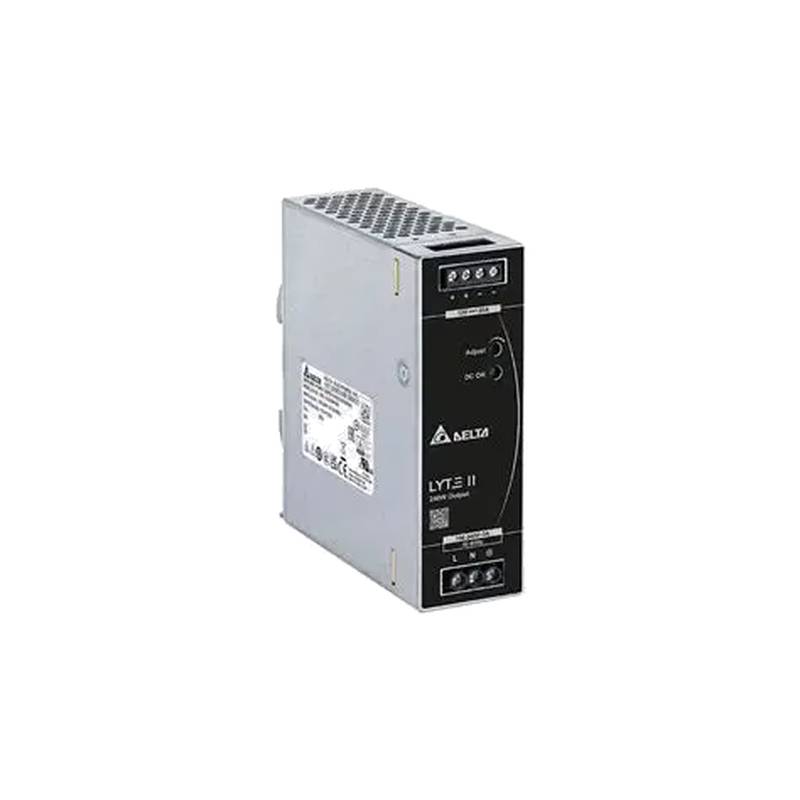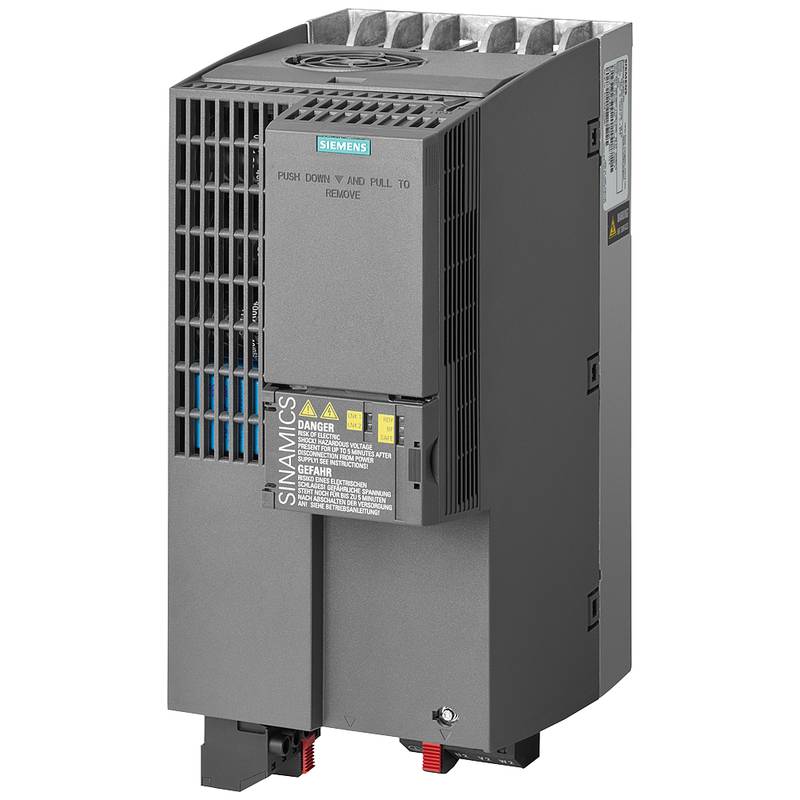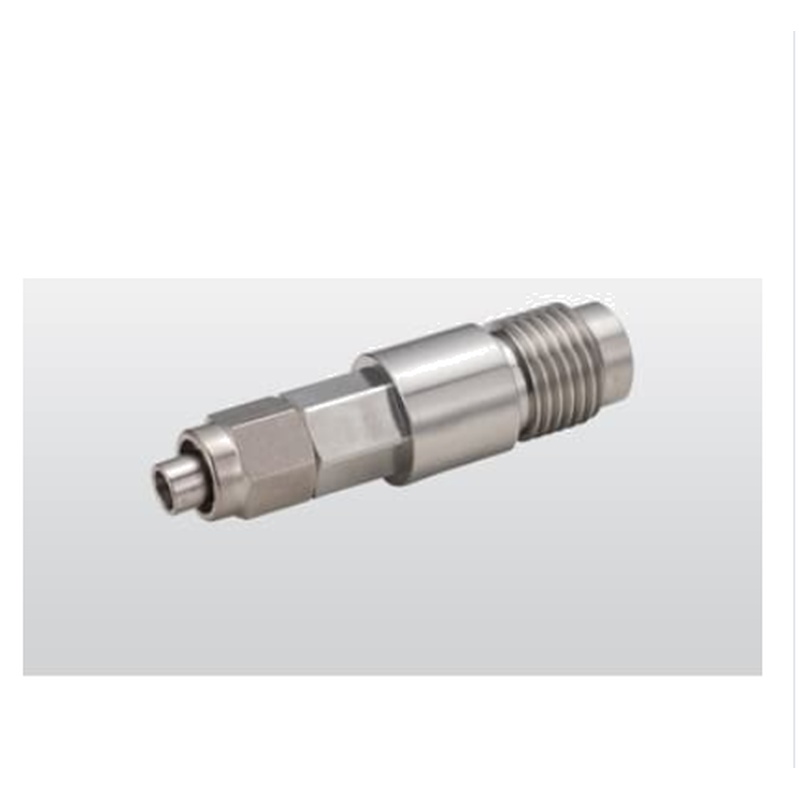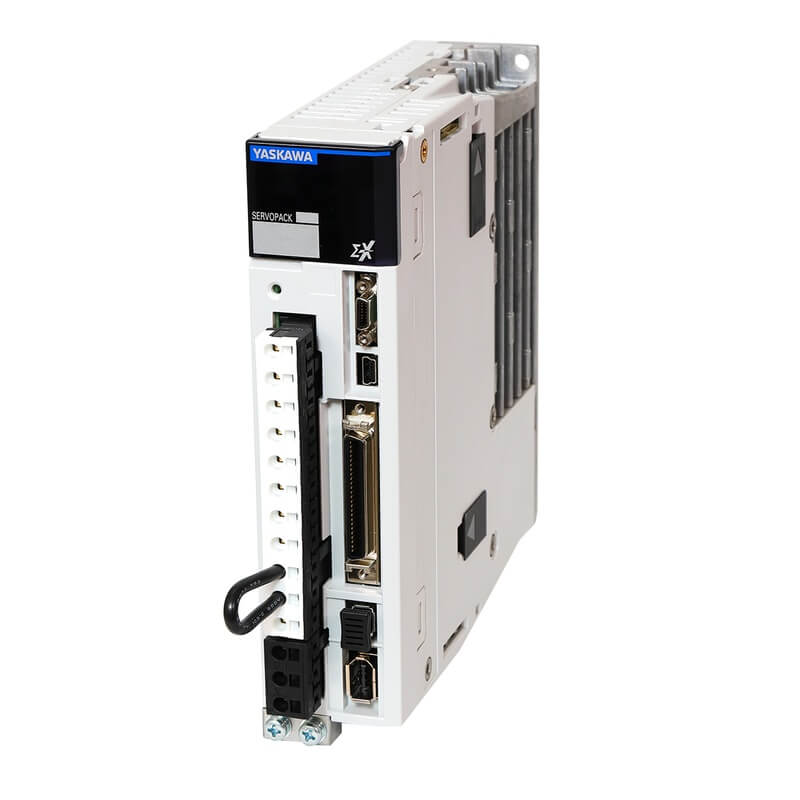
The INVT GD350A-018G/022P-4 is a high-performance Variable Frequency Drive (VFD) specifically engineered for demanding fan and pump applications. This drive excels by delivering exceptional energy efficiency, precise control, and robust reliability, making it a superior choice for HVAC systems, water supply networks, and industrial circulation processes. Its core advantages lie in advanced sensorless vector control, comprehensive protection features, and a user-friendly interface, all packaged within a compact and durable design. Key technical specifications include a power rating of 18.5 kW (022P denotes 22HP equivalent), an input voltage range of 380-460V AC, and an output frequency of up to 400 Hz, ensuring adaptability to a wide array of operational requirements.
Product Specifications
| Feature | Specification |
| :------------------ | :---------------------------------------- |
| Model Number | GD350A-018G/022P-4 |
| Rated Power | 18.5 kW / 25 HP |
| Input Voltage | 380V – 460V AC |
| Output Voltage | 380V – 460V AC |
| Output Frequency | 0 – 400 Hz |
| Control Method | Sensorless Vector Control, V/f Control |
| Overload Capacity | 150% for 60s, 180% for 10s |
| Protection Features | Overvoltage, Undervoltage, Overcurrent, Overload, Overtemperature, etc. |
| Communication | RS485 (Modbus RTU standard) |
| Operating Temp. | -10°C to +40°C (derating above +40°C) |
| Mounting | Wall-mount |
Core Features & Market Positioning
The INVT GD350A-018G/022P-4 distinguishes itself in the competitive VFD market through its sophisticated sensorless vector control algorithm, which provides superior torque response and precise speed regulation for fan and pump loads without the need for motor encoders. This technology significantly enhances operational efficiency and reduces installation complexity and cost. Its robust overload capacity, capable of handling 150% for 60 seconds, ensures reliable operation even under transient load conditions common in pumping systems. Furthermore, the drive's integrated multi-pump dedicated control logic and built-in PID controllers simplify the implementation of complex fluid management systems, positioning it as a high-value, intelligent solution for optimizing energy consumption and system performance in critical infrastructure and industrial processes.
Key Application Scenarios
This high-performance VFD is ideally suited for a diverse range of fan and pump applications where efficiency, control, and reliability are paramount. In the HVAC sector, it is extensively used for controlling air handling units, centrifugal fans, and circulating pumps to maintain precise environmental conditions while minimizing energy usage. For water and wastewater management, the GD350A-018G/022P-4 excels in driving variable speed pumps for water supply, sewage lifting, and irrigation systems, enabling consistent pressure and flow rates with significant energy savings. Its robust design and advanced features also make it a strong contender for industrial process applications, including cooling towers, fan-driven ventilation systems, and general-purpose pump drives requiring sophisticated control and protection.
Practical System Integration Guidance
Integrating the INVT GD350A-018G/022P-4 into existing or new systems is streamlined by its user-friendly design and comprehensive communication capabilities. For installation, ensure the drive is mounted vertically in a clean, well-ventilated area, free from excessive dust or corrosive fumes, adhering to specified ambient temperature limits to prevent derating. Wiring should be meticulously performed according to the terminal layout provided in the manual, utilizing shielded motor cables and ensuring proper grounding of both the drive and the motor to mitigate electromagnetic interference. Commissioning involves configuring essential parameters such as motor data, control modes (sensorless vector is recommended for optimal fan/pump performance), and PID loop settings if applicable. The built-in RS485 port supports Modbus RTU, allowing seamless integration into SCADA systems or Building Management Systems (BMS) for remote monitoring and control.
Operation and Risk Mitigation
Safe and efficient operation of the INVT GD350A-018G/022P-4 is enhanced by its extensive protection features. Critical fault codes are clearly displayed on the HMI, allowing for rapid diagnosis and resolution of issues such as overvoltage (OV), undervoltage (UV), motor overload (OL), heatsink overtemperature (OH), and output short-circuit (SC). To mitigate risks, always ensure the power supply is disconnected before performing any wiring or maintenance. Verify that the motor and VFD are correctly matched in terms of voltage, current, and power ratings. During operation, regular checks of the drive's temperature and fan performance are recommended. Implementing proper parameter settings, especially regarding acceleration/deceleration times and overcurrent limits, prevents mechanical stress on the connected equipment and electrical system disturbances.
Scalability & Long-Term Value
The INVT GD350A-018G/022P-4 offers significant long-term value through its inherent scalability and compatibility with evolving industrial automation trends. Its robust hardware platform and advanced software capabilities support integration with Industrial Internet of Things (IIoT) platforms via standard communication protocols like Modbus RTU, enabling sophisticated data analytics, predictive maintenance, and remote diagnostics. This allows for continuous optimization of fan and pump system performance, reducing operational costs and extending equipment lifespan. Furthermore, INVT's commitment to firmware updates ensures that the drive remains at the forefront of VFD technology, offering future-proofing and maintaining a competitive edge in energy efficiency and control precision for sophisticated fluid dynamics applications.
Frequently Asked Questions
What are the primary benefits of using the INVT GD350A-018G/022P-4 for pump applications?
This VFD offers superior energy savings by precisely matching motor speed to system demand, significantly reducing power consumption compared to fixed-speed pumps. It provides enhanced control accuracy and consistent pressure or flow, minimizing wear on the pump and associated plumbing. Its advanced protection features safeguard the motor and system from damage, prolonging equipment life and reducing maintenance costs.
The GD350A-018G/022P-4 features dedicated multi-pump control logic, simplifying the management of complex water distribution networks. It also includes built-in PID controllers for seamless integration into automated pressure or level control loops without external devices. The sensorless vector control ensures excellent dynamic response and stable operation even with fluctuating load conditions.
By optimizing pump operation, this drive reduces mechanical stress, water hammer effects, and overall system noise. This leads to a more reliable and efficient water supply or circulation system, with tangible reductions in operational expenditure over its service life.
How do I connect a motor to the INVT GD350A-018G/022P-4 VFD?
Begin by ensuring the VFD is powered off and safely isolated from the mains supply. Connect the three motor power leads (typically U, V, W) from the motor to the corresponding output terminals on the VFD. Use shielded motor cables of appropriate gauge to minimize electrical noise and interference.
It is crucial to establish a solid earth connection for both the VFD and the motor chassis to the system ground. Properly connect any auxiliary control signals, such as start/stop commands or speed reference inputs, to the designated low-voltage terminals on the VFD. Refer to the drive's wiring diagram for precise terminal assignments.
After all connections are verified, re-apply power and proceed with the parameter configuration and motor commissioning steps outlined in the user manual. Incorrect wiring can lead to drive faults, motor damage, or safety hazards.
What are the typical fault codes encountered with the INVT GD350A-018G/022P-4 and how can they be resolved?
Common fault codes include 'OL' for motor overload, indicating the motor is drawing excessive current, often due to mechanical binding or undersized motor. 'OV' (overvoltage) and 'UV' (undervoltage) relate to unstable input power supply conditions. 'OH' signifies heatsink overtemperature, usually caused by inadequate ventilation or exceeding ambient temperature limits.
To resolve 'OL', check for mechanical issues in the pump or fan, verify motor nameplate data against VFD settings, and ensure acceleration times are appropriately set. For 'OV' or 'UV' faults, investigate the input power quality and consider adding an external reactor if necessary. Address 'OH' by cleaning heatsink fins, improving airflow, or ensuring the VFD is not operating in an environment exceeding its rated temperature.
Always consult the GD350A-018G/022P-4's official manual for a comprehensive list of fault codes and their specific troubleshooting procedures. Correctly identifying and addressing these faults promptly is essential for maintaining system reliability and preventing further damage.
Can the INVT GD350A-018G/022P-4 be used with any type of fan or pump motor?
The GD350A-018G/022P-4 is designed to drive standard three-phase AC induction motors. While it offers excellent performance with most squirrel cage motors, it's vital to ensure the motor's voltage, frequency, and power ratings are compatible with the VFD's output specifications. Consult the motor's nameplate and the VFD's manual for compatibility checks.
For specialized motors, such as permanent magnet synchronous motors (PMSM) or high-efficiency IE4 motors, specific parameter configurations or firmware versions might be required. The VFD supports various control modes, including V/f and sensorless vector control, which are well-suited for typical fan and pump motor characteristics. However, always verify motor type and verify compatibility with the chosen control method for optimal performance and efficiency.
It is crucial to properly identify the motor's electrical characteristics and configure the VFD accordingly. Incorrect parameter settings, especially related to motor nameplate data, can lead to poor performance, reduced efficiency, or even damage to the motor or drive. Always refer to both the motor manufacturer's and INVT's documentation.
What is the advantage of sensorless vector control in the GD350A-018G/022P-4 for fan and pump systems?
Sensorless vector control allows the GD350A-018G/022P-4 to achieve precise speed and torque regulation without the need for an encoder feedback device on the motor. This simplifies installation by eliminating the cost and complexity of wiring an encoder. It also enhances reliability, as there are no additional mechanical or electrical components to fail.
This advanced control method enables the VFD to deliver high starting torque and rapid dynamic response, crucial for applications where fan or pump loads can change quickly. It ensures stable operation across a wide speed range, maintaining consistent flow or pressure with minimal deviation, thereby optimizing process control and energy efficiency.
For fan and pump applications, sensorless vector control ensures that the motor speed precisely follows the desired output, whether it's a setpoint from a PID controller or a system demand signal. This leads to significant energy savings by preventing over-speeding and maintaining optimal operating points, contributing to reduced operational costs and a lower carbon footprint.
How does the GD350A-018G/022P-4 facilitate energy savings in fan and pump operations?
The primary mechanism for energy savings is the VFD's ability to precisely control motor speed. By reducing the motor's speed when full power is not required, it drastically cuts energy consumption, adhering to the cube law for fan power (power is proportional to speed cubed). This direct speed control translates into substantial operational cost reductions.
Furthermore, the GD350A-018G/022P-4 incorporates advanced energy-saving algorithms and features like automatic torque boost optimization and sleep modes. These functions intelligently adjust drive operation based on load conditions, further minimizing power draw and maximizing efficiency. The precise control also means systems operate closer to their optimal design points, enhancing overall energy performance.
The drive's efficient design and robust sensorless vector control contribute to overall system efficiency. By eliminating mechanical throttling or bypass valves, the VFD ensures that energy is not wasted through these less efficient methods, making it a fundamentally more economical solution for variable-load applications like fans and pumps.
What are the communication capabilities of the INVT GD350A-018G/022P-4 for system integration?
The INVT GD350A-018G/022P-4 is equipped with a standard RS485 communication port, enabling seamless integration using the Modbus RTU protocol. This allows the VFD to be easily connected to PLCs, SCADA systems, or Building Management Systems (BMS) for remote monitoring and control. Operators can access operational data, status information, and fault logs remotely.
Through Modbus RTU, users can control start/stop commands, adjust speed references, change operating modes, and monitor key parameters such as output frequency, current, voltage, and temperature. This connectivity is vital for automated operations, centralized control, and implementing sophisticated energy management strategies across multiple systems.
The inclusion of Modbus RTU ensures broad compatibility with a wide range of industrial automation hardware and software platforms. This flexibility simplifies the integration process, allowing for robust and efficient data exchange, which is essential for modern industrial and building automation applications requiring interconnectedness.
Can the INVT GD350A-018G/022P-4 handle frequent starting and stopping cycles?
Yes, the GD350A-018G/022P-4 is engineered with robust components and advanced control algorithms that can withstand frequent start/stop cycles. Its sophisticated protection mechanisms, including overcurrent and overload protection, are designed to manage the inrush current associated with motor starts effectively.
The VFD’s design allows for controlled acceleration and deceleration ramps, which minimize mechanical stress on the motor, pump, or fan during frequent transitions. This reduces wear and tear on the connected equipment, prolonging its operational lifespan even under demanding start/stop conditions typical in many process applications.
By precisely managing motor currents and torque during each cycle, the GD350A-018G/022P-4 ensures smooth and reliable operation. This capability makes it well-suited for applications that require dynamic responsiveness and frequent adjustments to operational status, contributing to overall system uptime and efficiency.
What is the typical installation environment for the INVT GD350A-018G/022P-4?
The INVT GD350A-018G/022P-4 is designed for installation in industrial or commercial environments, typically within a control panel or a designated electrical room. It requires a clean, dry location free from excessive dust, corrosive gases, and direct sunlight to ensure optimal performance and longevity.
The drive has a specified operating temperature range, typically from -10°C to +40°C at full load, with derating required for ambient temperatures above +40°C. Therefore, adequate ventilation or cooling within the installation space is crucial to maintain performance and prevent overheating. Proper spacing around the VFD must be maintained for airflow.
Installation should be vertical on a flat surface, typically a wall or mounting plate, to facilitate heat dissipation through its integrated heatsink. Avoid installing the drive in locations subject to excessive vibration or shock, as this can affect component reliability. Adherence to environmental specifications is key for safe and efficient operation.
How does the PID control function in the GD350A-018G/022P-4 benefit fan and pump system management?
The built-in PID (Proportional-Integral-Derivative) controller allows the GD350A-018G/022P-4 to autonomously regulate system parameters like pressure, flow, or temperature without requiring an external controller. This simplifies system design and reduces component count, leading to lower installation costs and fewer potential points of failure.
By continuously monitoring a process variable (e.g., system pressure) via an analog input and comparing it to a setpoint, the PID controller adjusts the motor speed accordingly. This ensures precise and stable control, automatically compensating for variations in demand or system conditions, such as changes in pipe friction or valve positions.
This advanced control capability is invaluable for maintaining consistent system performance in applications like water supply networks, HVAC systems, and industrial process loops. It optimizes efficiency by only consuming the energy necessary to meet the setpoint, preventing over-pressurization or over-circulation and contributing significantly to energy savings and operational stability.

















